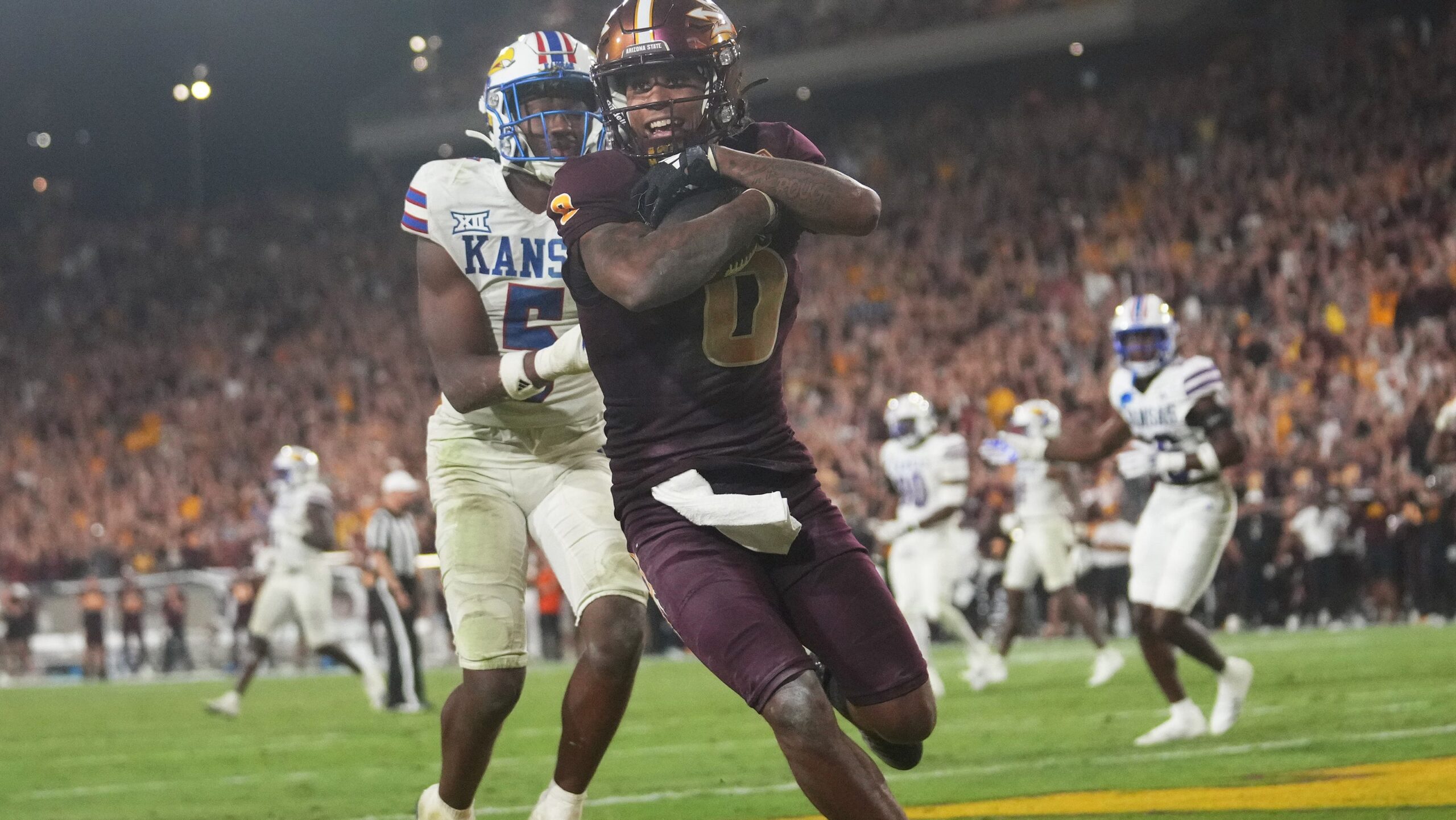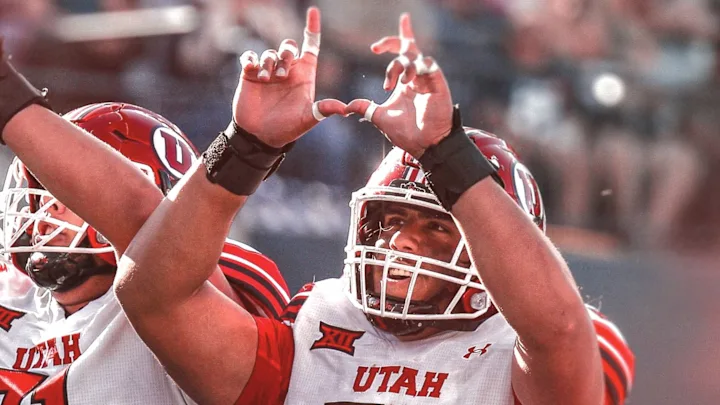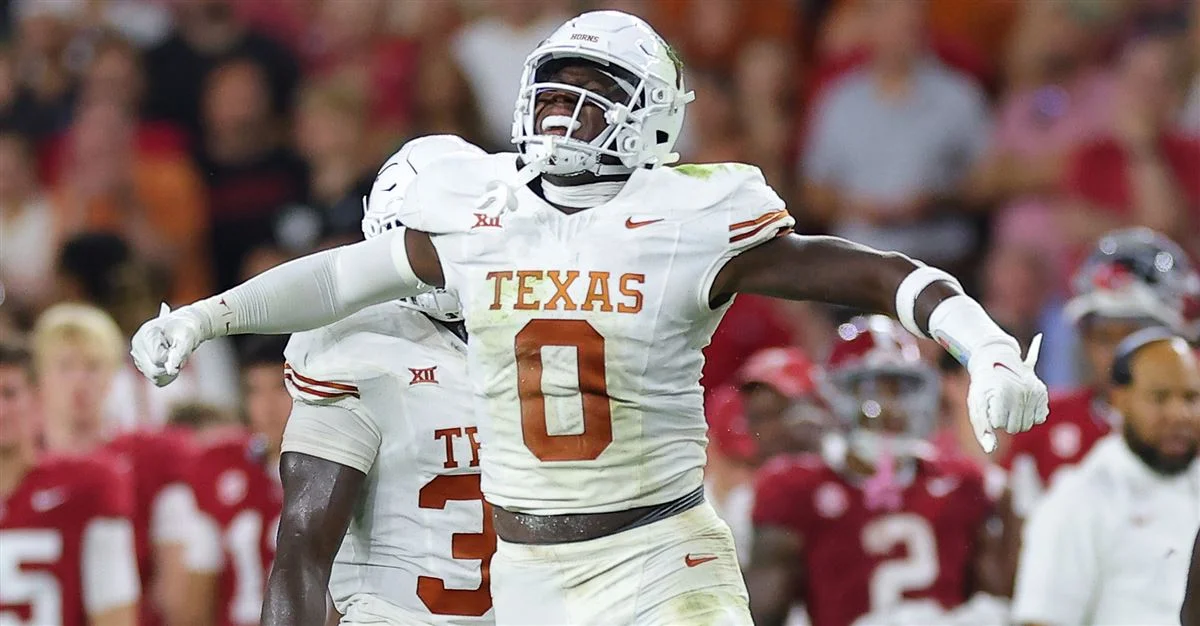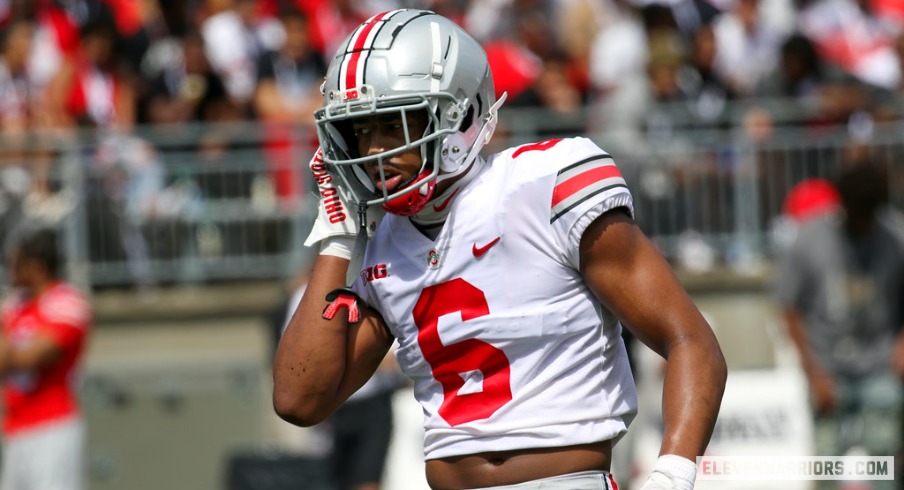By Charlie Campbell.
Send Charlie an e-mail here: [email protected]
Follow Charlie on Twitter @draftcampbell for updates.
This page was last updated April 18, 2013. Follow me @walterfootball for updates.
Position Review: Inside Linebacker
Inside Linebacker Class
Early-round talent: A
Mid-round: C
Late-round: D+
Overall grade: B-
2012 prospects vs 2013
Luke Kuechly > Alec Ogletree
Dont’a Hightower > Manti Te’o
Mychal Kendricks < Kevin Minter
Bobby Wagner > Jonathan Bostic
Sean Spence > Kiko Alonso
Kyle Wilber < Kevin Reddick
Keenan Robinson < Nico Johnson
James-Michael Johnson < A.J. Klein
This is an interesting comparison. The 2013 NFL Draft class may have more high-end talent than the 2012 NFL Draft, but the depth was drastically better a year ago. The 2012 class had very good prospects on the second day and some depth in the late-rounds. One quality rookie linebacker, Cincinnati’s Vontaze Burfict, went undrafted, and he looks better than all but the top three linebackers of the 2013 class. This year’s group features an elite trio at the top and a significant drop behind them.
If you were to merge the two classes, Kuechly is hands down the best linebacker. He was the seventh-overall player on my big board last year and was tremendous as a rookie for Carolina. Some in the league feel Kuechly is the prototypical middle linebacker for today’s NFL.
Ogletree isn’t far behind Kuechly. Considering only the on-the-field evidence, Ogletree would fit above Hightower. Minter and Te’o would go behind Hightower and above Kendricks.
Bostic and Alonso would be behind Spence. Reddick, Nico Johnson and Klein would all go behind James-Michael Johnson.
The grade for the inside linebacker class in the 2013 NFL Draft could be improved by some teams viewing Kansas State’s Arthur Brown, Rutgers’ Khaseem Greene, Penn State’s Gerald Hodges and Stanford’s Chase Thomas as players who have the potential to play in the middle.
Safest Pick: Kevin Minter, LSU

Minter is the safest pick for a few reasons. One, I think there is bust potential for Alec Ogletree to ruin his career with off-the-field problems. Manti Te’o could be a bust risk more from an athletic and speed standpoint. Minter is a well-rounded defender against the pass and the run. He also has the speed, strength and athleticism to be a three-down starter in the NFL. Minter may not have the upside of Ogletree, but looks like the safer selection.
Biggest Bust Potential: Kevin Reddick, North Carolina

Reddick has all the physical tools to be starting three-down linebacker in the NFL. However, he lacks instincts and seems to be a step slow at diagnosing plays. Reddick may not develop the ability to thrive in pass coverage. A linebacker won’t see the field in the passing-driven NFL if he can’t contribute sound coverage. Reddick is a physical specimen and a good athlete, but if he lacks instincts at the next level, he’ll never pan out as a starter.
Inside Linebacker Rankings by Attributes
Pass Coverage:
NFL prototype: Luke Kuechly, Panthers
- Alec Ogletree
- Manti Te’o
- Kiko Alonso
- Kevin Minter
- Kevin Reddick
- A.J. Klein
- Jonathan Bostic
- Nico Johnson
Recap: The ability for a linebacker to be effective in pass coverage is mandatory in the passing-driven NFL. Defensive coordinators need linebackers who cover a lot of ground and can drop quickly downfield. Linebackers who can effectively matchup against the versatile pass-receiving tight ends and running backs out of the backfield, while still playing zone, are difficult to find.
Ogletree is a former safety and that shows in his pass coverage. He has the speed, agility and length to potentially match up in man on tight ends. Ogletee covers a lot of ground in zone and has good instincts. His pass-coverage ability is one of his most intriguing attributes to NFL teams.
Te’o slimmed down prior to the 2012 season to become a more effective linebacker in pass coverage. The results were superb as he was able to cover a lot more ground and put himself in position to make more plays. Te’o finished second in the nation in interceptions with seven and flashed the ability to pick up receivers running through the secondary. His instincts were good overall. He has a good understanding of pass defense and looks ready to play in the NFL in this regard.
Alonso looked comfortable playing in space in 2012 and did well dropping into zone coverage for Oregon. He showed off nice instincts and balls skills with four interceptions during his senior season. Alonso’s pass defense is one of his better assets.
Minter was a quality defenders in pass coverage in college. He needs to continue to develop his understanding of coverage so he doesn’t flow to the wrong spot. Minter has a good foundation and should quickly turn into three-down player as a professional.
Reddick has the speed and athletic ability to be a good coverage linebacker, but he needs work.ReddickHe needs to get better at getting depth in his drop and covering receivers in his zone. This will be one of his important skills to develop in order to pan out as a pro.
Klein is smart and experienced defending the pass coming from the Big XII. However, he looks short on speed and athleticism to be a pass-defender in the NFL. Klein could improve his pass coverage with good coaching.
Johnson is stiff and a liability in pass coverage. Alabama removed him from the field in passing situations the past two seasons and that will be his role in the NFL.
Run Defense:
NFL prototype: Patrick Willis, 49ers
- Kevin Minter
- Alec Ogletree
- Manti Te’o
- Kiko Alonso
- Jonathan Bostic
- Kevin Reddick
- Nico Johnson
- A.J. Klein
Recap: As multiple scouts told WalterFootball.com at the college All-Star games, a thumper inside linebacker is a dying breed in the NFL. Still, teams have to have middle linebackers who can be tough run-defenders. They especially need pursuit skills with the rash of mobile quarterbacks and the burgeoning success of the read option.
Minter is narrowly the best run-defender over Ogletree. The reason is Minter makes more tackles sideline-to-sideline. He totaled 130 tackles with 15 tackles for a loss in 2012. Minter was all over the field for LSU. Ogletree was productive with 111 tackles in 10 games. Both linebackers fly around and track down the ball-carrier. Each has the ability to be skilled at shedding blocks in the NFL. Minter and Ogletree should both be assets as run-defenders.
Te’o’s run defense wasn’t as strong as a senior compared to his other seasons. 2012 ended for him with an ugly showing against Alabama as the Crimson Tide ran over him in dominating fashion. Te’o was actually a more productive run-defender as a junior (128 tackles) and sophomore (133 tackles). He doesn’t look like a sideline-to-sideline linebacker as a pro and could struggle with getting off blocks. Te’o should still be a solid run-defender in the NFL, but not a standout like Minter or Ogletree.
Alonso was a good run-defender as a senior, but Oregon had so many big leads that teams were forced to mostly throw against the Ducks’ defense. He has some speed and strength but will need some development in the NFL. Bostic improved his overall game in 2012, including his run defense. He has some potential to develop in the NFL.
Reddick’s run defense was disappointing as a senior. He had 18.5 tackles for a loss, but only 85 total tackles. That was a career high; in other years, Reddick had totals in the 70s. He is a much better run-defender in pursuit or attacking downhill. Reddick looks slow to read his keys and can take bad angles when he doesn’t charge into the backfield.
Johnson is a sound run-defender who is physical in the box. He isn’t fast enough to consistently make tackles on the perimeter, but he could be a good linebacker in short-yardage and on the goal line.
Klein recorded a lot of tackles, 117, but he looks undersized and not fast enough to be a tough run-defender in the NFL. Blockers can push him around.
Read and React:
NFL prototype: Jerod Mayo, Patriots
- Alec Ogletree
- Kevin Minter
- Manti Te’o
- Kiko Alonso
- A.J. Klein
- Jonathan Bostic
- Nico Johnson
- Kevin Reddick
Recap: The ability to read keys and instantly react to the play is a critical attribute for any inside linebacker in the NFL. The ones who do that well put themselves in position to make more tackles and produce more splash plays. This year’s group of linebackers does a solid job of this.
Ogletree is the best read-and-react linebacker available. He used those skills to not only make a lot of tackles, but he also put himself in position to make a lot of splash plays.
Minter is superb with his read-and-reaction in the ground game. He sees what the offensive line is setting up and runs to the right spot. Minter will need to continue to improve on his read-and-react skills in pass coverage. Sometimes he goes to the wrong place.
Te’o is the opposite. He was excellent at reading and reacting in pass coverage. There were a number of big plays that Te’o produced via his ability to read the offense and quarterback. He wasn’t as good in the ground game at diagnosing the play from seeing the clues from the offensive line. Te’o could and should improve on that for the NFL.
Alonso has quality read-and-react skills. Like Te’o, he seems better in the passing game. Klein looks like a smart linebacker who reads the offense well. Mentally, he is sharp enough for the NFL. Bostic and Johnson read and react a lot better against the run than they do against the pass.
Reddick’s read-and-react skills are subpar. His best plays come when he just executes an assignment like a pass blitz or run blitz. Reading the offense to make a big play is not one of his strong suits. The inability to read and react really holds Reddick back from maximizing his athletic potential.
Tackling:
NFL prototype: London Fletcher, Redskins
- Alec Ogletree
- Kevin Minter
- Manti Te’o
- A.J. Klein
- Nico Johnson
- Kiko Alonso
- Kevin Reddick
- Jonathan Bostic
Recap: With each passing year, I think tackling is becoming a lost art in the NFL. Missed tackles are a plague on defenses that seems to get progressively worse every season. One of the primary reasons for this epidemic is the decreased training camp practices with less padded work and live hitting. Rule changes have also made tackling more difficult as players must avoid contact in certain locations and methods of taking down a ball-carrier. The end result is seeing a plethora of missed tackles on a down-by-down basis.
Minter is a fantastic tackler. He hits with authority while also doing a good job of wrapping up ball-carriers. When Minter got to the runner in 2012, they were going down. Minter was especially good in the open field. His tackling form looks NFL ready.
Ogletree is close to being the top tackler and should be very good as a pro as he continues to develop. Ogletee is strong and backs are unable to break out of his grasp, but he has the tendency to go for some knockout blows when he needs to wrap up. Ogletree also can deliver some hard hits to kill a ball-carrier’s momentum.
Te’o had some surprising missed tackles as a senior, especially in the Alabama game. He dropped weight for his final season and being lighter looks to have had a negative impact in this regard. The senior was more of a drag down tackler at times. Te’o isn’t a bad tackler, but he needs to get back to fundamentals in the NFL.
Klein is a reliable tackler. He is a drag-down type rather than a linebacker who stuffs ball-carriers and plants them in the ground. Klein could struggle with NFL power backs. Johnson was well-coached at Alabama and has good fundamentals in his tackling. Alonso was also consistent as a senior.
Reddick and Bostic had more missed tackles than they should have as seniors. Both of them need to work on their technique in the NFL.
Instincts:
NFL prototype: Patrick Willis, 49ers
- Alec Ogletree
- Manti Te’o
- Kevin Minter
- Kiko Alonso
- A.J. Klein
- Jonathan Bostic
- Kevin Reddick
- Nico Johnson
Recap: Instincts are what separates good linebackers from great ones. Having the innate feeling of what the offense is going to do is a huge factor for linebackers who can take the ball away, make a critical stop on a third down or consistently set up good down-and-distance situations for the defense. All great players are instinctive.
Considering Ogletree’s big plays against the run and pass leaves him as the most instinctive linebacker in this draft class – but that isn’t by a big amount. Te’o and Minter also possess good instincts. Those three players have all shown the ability to anticipate what is coming and get in position to make splash plays. Each should continue to have good instincts in the NFL after getting tuned into the pro game.
Alonso has good instincts in pass defense, but needs to improve versus the run. Klein was a pretty instinctive player at Iowa State, but he was better as a junior than senior.
The bottom three linebackers here really don’t possess good instincts – although Bostic looked a lot better as a senior. Reddick will flash once in a while and you ask yourself where has that been hiding. Johnson was not a producer of splash plays during his time at Alabama, and he won’t be that type of linebacker in the NFL. Johnson will be a backup and situational run-defender.
Pass Rush:
NFL prototype: Daryl Washington, Cardinals
- Kevin Reddick
- Kevin Minter
- Alec Ogletree
- Manti Te’o
- Jonathan Bostic
- Nico Johnson
- Kiko Alonso
- A.J. Klein
Recap: There aren’t too many inside linebackers in the NFL who consistently rush the passer, but 3-4 defenses especially like to have interior linebackers who can get after the quarterback.
Judging by his senior season, Reddick’s ability to blitz should carry over well in the NFL. He was impressive at flying into the backfield to get to the quarterback. Reddick had 6.5 sacks and came close to a number of others. He has the speed and explosiveness to line up off the line of scrimmage and still get to the signal-caller. Reddick’s blitzing ability should interest 3-4 defenses.
Minter was a good interior blitzer for LSU in 2012, totaling four sacks. He is fast in pursuit and would fit well as an inside rusher in a 3-4 defense. Ogletree is the same having played that technique for Georgia. The Bulldogs didn’t need him to blitz since they had Jarvis Jones rushing the quarterback, but Ogletree was a very effective blitzer when they sent him. Ogletree had three sacks in each of the past two seasons. He is very fast in pursuit.
Te’o was so good in pass coverage the Fighting Irish didn’t blitz him that much in 2012. He recorded only 1.5 sacks, but he does have more blitzing ability than that total indicates. Te’o had five sacks in 2011 as a junior. He could get to the quarterback in the NFL and catch offenses by surprise when he rushes.
Bostic showed some blitzing ability as a senior. Johnson had some good rushes on some blitzs, but was typically off the field when Alabama was in pass-defense situations.
Alonso and Klein did a lot more dropping into coverage. Neither of them looks like an NFL blitzing linebacker.
Shedding Blocks:
NFL prototype: Patrick Willis, 49ers
- Kevin Minter
- Manti Te’o
- Alec Ogletree
- Kevin Reddick
- Kiko Alonso
- Jonathan Bostic
- Nico Johnson
- A.J. Klein
Recap: Getting off blocks is a critical attribute for any linebacker in the NFL. Running around blockers results in busted gap integrity and can spring backs for big runs. Shedding blocks is one of the hardest aspects for a college player going to the next level. A lot of the top linebackers in the NFL struggled with it early on.
Minter could get more consistent, but the junior was good about getting off blocks in 2012. He has the strength to do it in the NFL. Te’o finished the year on a sour note in this regard against Alabama, but he typically had the ability to shed blocks during his college career.
Once Ogleetree learns to use his hands and builds more strength, he should be best of the 2013 NFL Draft’s linebackers at beating blocks. Ogletree has the size and the physicality to get off blockers. His short-area quickness also helps him to beat linemen.
Reddick has the strength and athletic ability to defeat blocks in the NFL, but will need coaching to develop the skill. Alonso and Bostic were better about defeating blockers in 2012 than in previous seasons.
Johnson is physical with offensive linemen, but after disengaging, he doesn’t get to the ball-carrier often enough. I can definitely see Klein struggling to shed NFL offensive linemen.
Awareness:
NFL prototype: London Fletcher, Redskins
- Manti Te’o
- Alec Ogletree
- Kevin Minter
- A.J. Klein
- Kiko Alonso
- Jonathan Bostic
- Kevin Reddick
- Nico Johnson
Recap: Awareness is an increasingly important trait for linebackers given the read options and misdirection plays that are currently challenging defenses in the NFL.
Te’o has the best awareness of any linebacker in the draft class. He does a superb job of knowing what is going around in his surroundings. Te’o made some plays in 2012 that made it seem like he had eyes in the back of his head. Te’o’s intelligence is one of his best traits.
Ogletree has very good awareness and typically does not get caught out of position. Minter has awareness, but there were plays on which he bit on some fakes by the offense. Minter will get better with more experience.
Klein has good awareness and usually wasn’t caught out of position. Alonso also should improve his awareness with more playing time. He didn’t see the field much in his first three years at Oregon.
Bostic’s awareness was improved as a senior, but he still could stand to get better. Reddick is inconsistent; he seems to get it sometimes and looks completely lost at other points. Johnson’s awareness was limited to runs in the tackle box.
|
|
NFL Picks - Dec. 13
NFL Power Rankings - Dec. 10
2026 NFL Mock Draft - Dec. 10
Fantasy Football Rankings - Sept. 1




